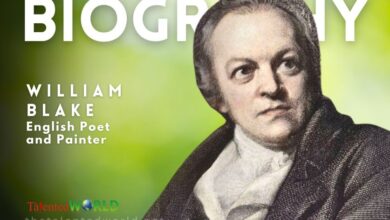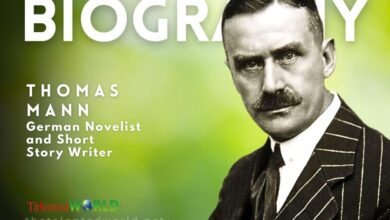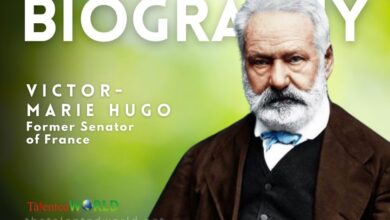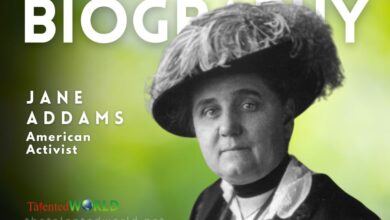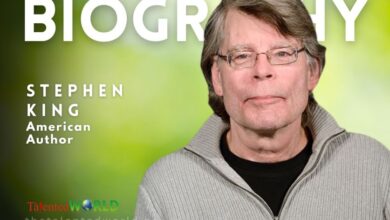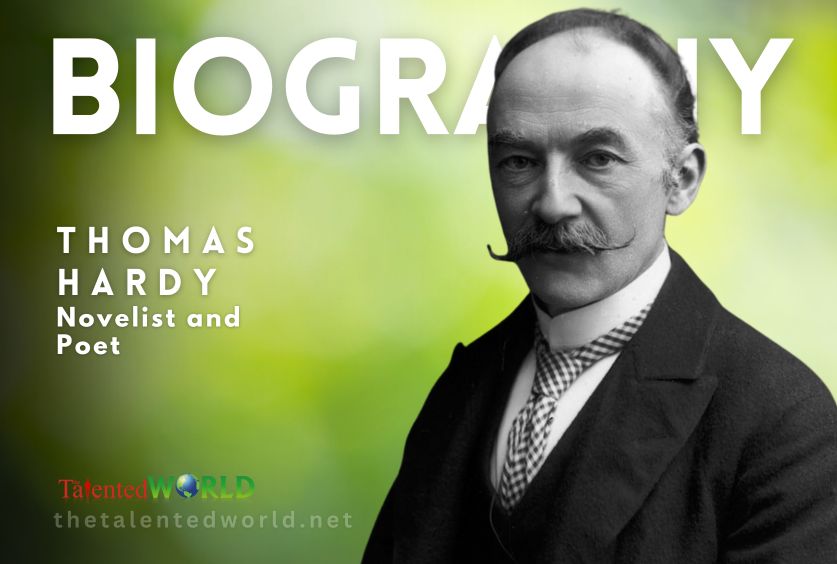
Quick Facts
| Fact | Details |
|---|---|
| Born | 2 June 1840 |
| Place of Birth | Stinsford, Dorset, England |
| Died | 11 January 1928 (aged 87) |
| Place of Death | Dorchester, Dorset, England |
| Occupation | Novelist, poet, short story writer |
| Alma Mater | King’s College London |
| Literary Movement | Naturalism, Victorian literature |
| Notable Works | Tess of the d’Urbervilles, Far from the Madding Crowd, The Mayor of Casterbridge, The Return of the Native, Jude the Obscure |
| Spouses | Emma Gifford (m. 1874; died 1912), Florence Dugdale (m. 1914) |
| Signature | [Signature Image] |
| Famous Novels | Tess of the d’Urbervilles, Far from the Madding Crowd, The Mayor of Casterbridge, Jude the Obscure |
| Famous Poems | Collected Poems |
| Literary Influence | Influenced by Romanticism and William Wordsworth |
| Famous Region | Wessex (semi-fictional region based on South West England) |
Thomas Hardy Movies
| Movie | Year |
|---|---|
| Far from the Madding Crowd | 2015 |
| Tess | 1979 |
| Under the Greenwood Tree | 2005 |
| Jude | 1996 |
| The Mayor of Casterbridge | 2003 |
| The Return of the Native | 1994 |
| The Woodlanders | 1997 |
| Trishna | 2011 |
| Tess of the d’Urbervilles | 1924 |
| The Claim | 2000 |
| Prem Granth | 1996 |
| Daag | 1973 |
| Dulhan Ek Raat Ki | 1967 |
| Vichitra Jeevitam | 1978 |
| A Romantic Adventure | 1940 |
| Man Ki Jeet | 1944 |
| Mayor Nair | 1966 |
| Mi-ae | 1970 |
| Thomas Hardy: Fate, Exclusion And Tragedy | |
| Casterbridgeský starosta |
Thomas Hardy Books
| Book | Year |
|---|---|
| Tess of the d’Urbervilles | 1891 |
| Far from the Madding Crowd | 1874 |
| Jude the Obscure | 1895 |
| The Return of the Native | 1878 |
| The Mayor of Casterbridge | 1886 |
| The Woodlanders | 1887 |
| A Pair of Blue Eyes | 1873 |
| Under the Greenwood Tree | 1872 |
| Two on a Tower | 1882 |
| A Laodicean | 1881 |
| Desperate Remedies | 1871 |
| The Hand of Ethelberta | 1876 |
| The Trumpet-Major | 1880 |
| The Well-Beloved | 1897 |
| Wessex Tales | 1888 |
| Wessex Poems and Other Verses | 1898 |
| Collected poems of Thomas Hardy | 1919 |
| Life’s Little Ironies | 1894 |
| Poems of the Past and the Present | 1901 |
| Satires of Circumstance | 1914 |
| Winter Words in Various Moods and Metres | 1928 |
| The Son’s Veto | 1891 |
| On the Western Circuit | 1891 |
| An Imaginative Woman | 1894 |
| The Distracted Preacher | 1879 |
| The Melancholy Hussar of the German Legion and Other Stories | 1924 |
| Our Exploits At West Poley | 1893 |
| Barbara of the House of Grebe | 1890 |

